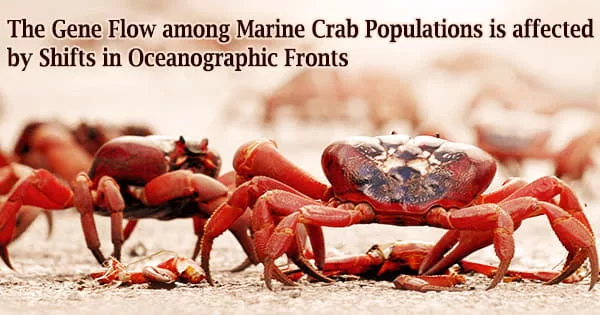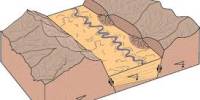The strength and position of the oceanic fronts that restrict the gene linkage of populations of marine crabs in the Mediterranean and the Atlantic change over time. The gene structure of populations of marine crabs of commercial and culinary interest is altered by these dynamic changes, which are discussed in an article that was published in the journal Scientific Reports.
Francesc Mestres, from the Faculty of Biology and the Biodiversity Research Institute of the University of Barcelona (IRBio), and Pere Abelló, from the Institute of Marine Sciences (ICM-CSIC), are the study’s principal investigators. The new research offers information of scientific interest to improve the policies on the conservation and commercial exploitation of these crustaceans.
Among the coauthors of the study are the lecturer Concepción Arenas and the bachelor and master’s degree students Víctor Ojeda, Bruna Serra, Clàudia Lagares, Eva Rojo-Francàs and Maria Sellés, from the Faculty of Biology of the UB, as well as other experts from the Spanish Institute of Oceanography (IEO-CSIC).
Oceanographic fronts are dynamic and changing
Gene flow, or the exchange of genes among populations of the same species in the oceanic environment, can be modulated by marine currents. The biological evolution of organisms has been greatly influenced by this genetic connection.
Mountains, rivers, deserts, and other natural barriers might lessen this gene flow between populations in terrestrial animals. The conventional wisdom held that organisms, whether in their adult or larval stages, could travel freely in the water and transfer their genes without hindrance in the marine environment.
However, there is mounting evidence that marine discontinuities caused by moving water masses, such as oceanographic fronts, play an important role in restricting the migration and distribution of marine organisms.
The population distribution of haplotypes (combinations of alleles) varies over the analysed time period as a consequence of the existence of oceanographic barriers. For instance, in the case of the Gibraltar Strait, a statistically significant effect on the reduction of gene flow has been found in four of the six studied years. The Almeria-Oran front is also a key barrier, but its location and effects on gene flow varied over the years.
Professor Francesc Mestres
“Marine currents can move the organisms to great distances, but they can produce eddies and gyres, which generate oceanographic fronts and limit gene flow among populations, even if they are close on a geographical scale,” notes Professor Francesc Mestres, from the Department of Genetics, Microbiology, and Statistics of the UB.
“The study he continues highlights that the intensity and location of these fronts can vary over time, and this oceanographic dynamic and generate a great temporary variability in the connectivity patterns among species.”
Harbour crabs as a study model
The harbour crab (Liocarcinus depurator), a decapod crustacean of commercial relevance that is frequently utilized in fish soup and rice dishes, was the study’s main focus. It is found in the murky seafloor of the continental shelf, between 50 and 200 meters deep.
Seven marine populations of the Atlantic-Mediterranean transition were sampled between 2014 and 2019 as part of the IEO-CSIC MEDITS and ARSA fishing and oceanographic campaigns: Cadiz, West and East Alboran Sea, Alicante, Valencia, Ebro Delta, and North Catalonia.
Crab populations might be found on both sides of the western Mediterranean basin’s oceanographic barriers, notably the Gibraltar Strait (GS), the Almeria-Oran front (AOF), and the Ibiza Chanel (IC).
The researchers examined a portion of the mitochondrial gene cytochrome oxidase subunit I (COI), one of the most frequently used in ecological and evolutionary studies, to analyze gene flow and genetic variability in populations. The gene’s 966 total sequences in sea crabs from the aforementioned populations were examined.
“Specifically, the adult crabs analysed in a particular year had dispersed the previous year, when they were in a larval form, so they could provide information on the state of currents and fronts of the previous year,” notes the expert Pere Abelló (ICM-CSIC).
The research area has two distinct hablogroups of gene sequences, the Atlantic (ATL) and the Mediterranean (MED), which are more prevalent in Atlantic seas and Mediterranean waters, respectively, according to the analysis of the temporal series data.
“The population distribution of haplotypes (combinations of alleles) varies over the analysed time period as a consequence of the existence of oceanographic barriers. For instance, in the case of the Gibraltar Strait, a statistically significant effect on the reduction of gene flow has been found in four of the six studied years. The Almeria-Oran front is also a key barrier, but its location and effects on gene flow varied over the years,” says Francesc Mestres.
“Specifically, just in the year in which the front was displaced towards the centre of the Alboran Sea, a significant effect on the reduction of gene flow was detected in the Ibiza channel, another oceanographic front.”
The genetic makeup of the crabs found in the Atlantic-Mediterranean transition region can therefore be divided into three regions: the Gulf of Cadiz, the Alboran Sea, and the Levantine-Catalan populations. This was made feasible by the collaborative analysis of all the populations across the various years.
“These results are of special interest for the proper definition of the Marine Protected Areas and also to improve conservation and fisheries management policies for this marine crab. Especially in a context of global change with increasingly higher temperatures that could threaten this animal populations,” concludes the research team.
“All these results are of particular interest for the proper definition of Marine Protected Areas and also to improve conservation and fisheries management policies for this marine crab. Especially in a context of global change with increasingly higher temperatures that could threaten the populations of this animal,” concludes the research team.
















